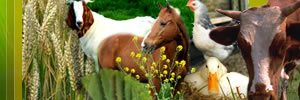PRODUCTION PERFORMANCE OF LACTATING NILI-RAVI BUFFALOES UNDER THE INFLUENCE OF BOVINE SOMATOTROPIC HORMONE WITH VARYING LEVELS OF DIETARY ENERGY
I. A. Batth, M. A. Mughal, M. A. Jabbar* and M. Abdullah**
Directorate of Livestock Farms Punjab, Lahore, Pakistan
*Department of Food and Nutrition, University of Veterinary and Animal Sciences, Lahore, Pakistan
**Department of livestock production, University of Veterinary and Animal Sciences, Lahore, Pakistan
Corresponding author– E-mail: ia_batth@hotmail.com
ABSTRACT
The study was conducted to determine the effect of dietary energy on milk yield and its composition under the influence of bST in Nili Ravi buffaloes. Multiparous buffaloes (n=12) at early lactation and similar level of production were selected and randomly divided into three groups. Each group was fed one of the following three dietary treatments viz., low energy density + bST (LED + bST), medium energy density + bST (MED+ bST), and high energy density + bST (HED+ bST). The LED, MED and HED diets were furnished with energy densities of 85, 100 and 115% of NRC. standards, respectively. Four animals were allotted to each treatment following completely randomized design. All the experimental animals were injected bST at fortnightly intervals after 7±2 d. postpartum for a period of 60 d. The nutritional requirements of these animals were met through a total mixed ration with different densities of energy. The increase in milk yield on HED ration was significantly higher (P<0.05) than for the LED and MED diets. The difference in the milk yields between the LED and MED rations was non-significant (P>0.05). Feed efficiencies differ significantly (P<0.05) among treatments. Nutrient intake (except for ether extract) was significantly (P<0.05) higher on the LED ration than the other two other rations. However, milk composition and body weight gain were similar for all the rations. Results indicated that in early lactation bST administration with 15% higher dietary energy than recommended by NRC has favorable effect on the production performance of Nili-Ravi buffaloes.
Key words: Bovine somatotropic hormone; Nili-Ravi buffaloes; milk yield; dietary energy.
|





